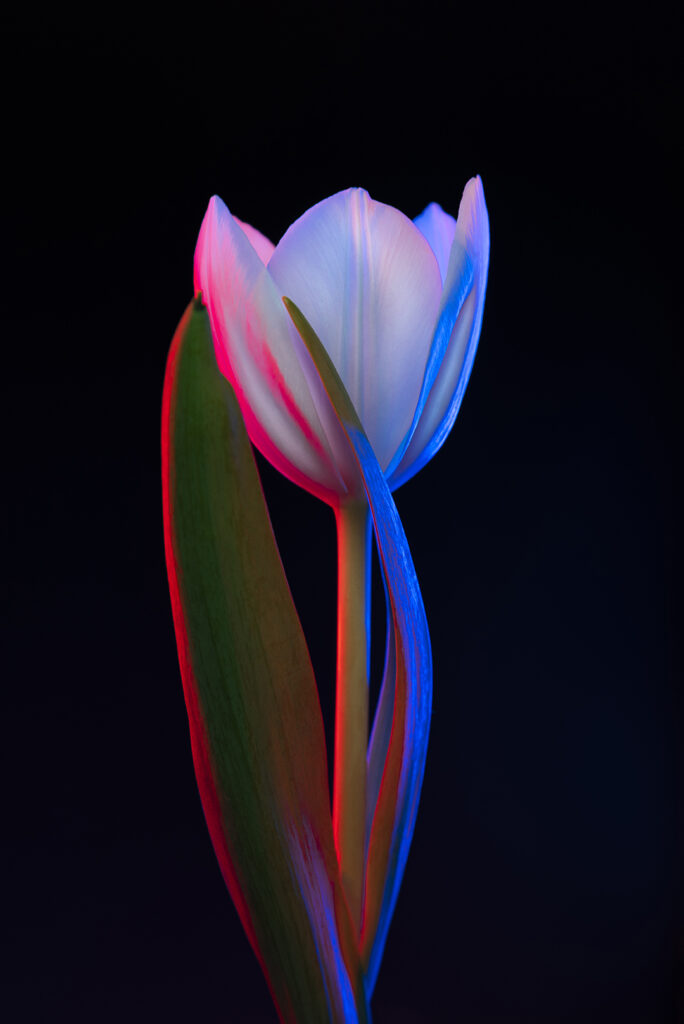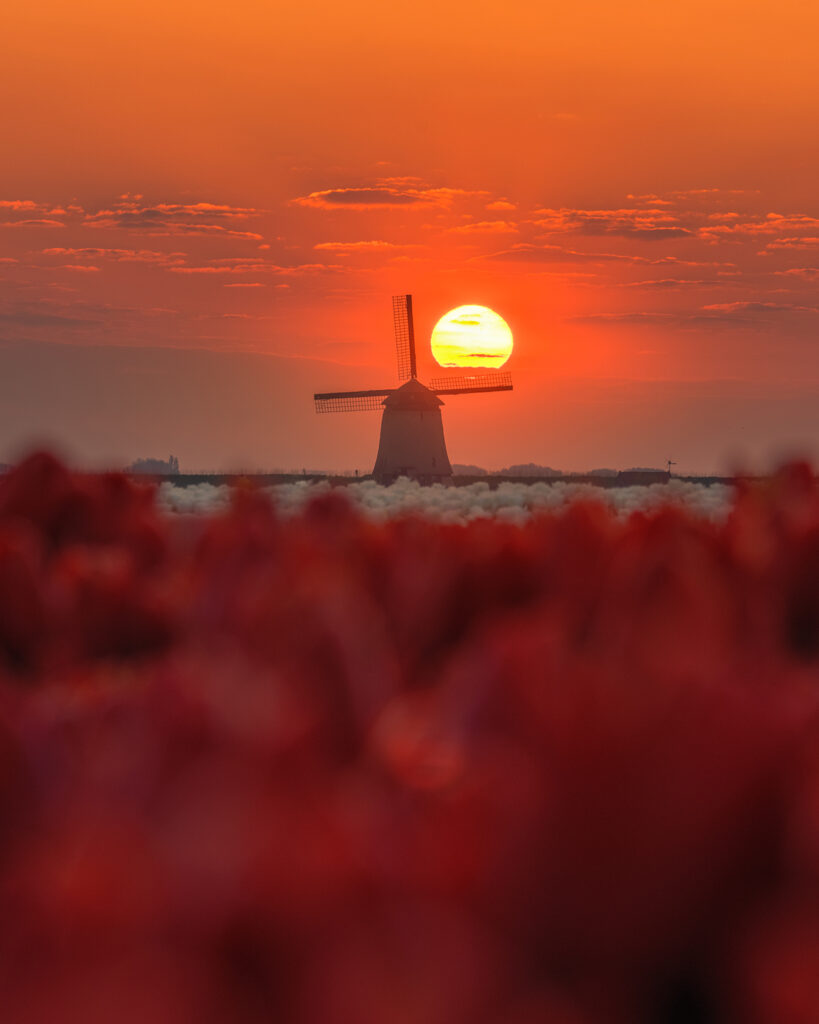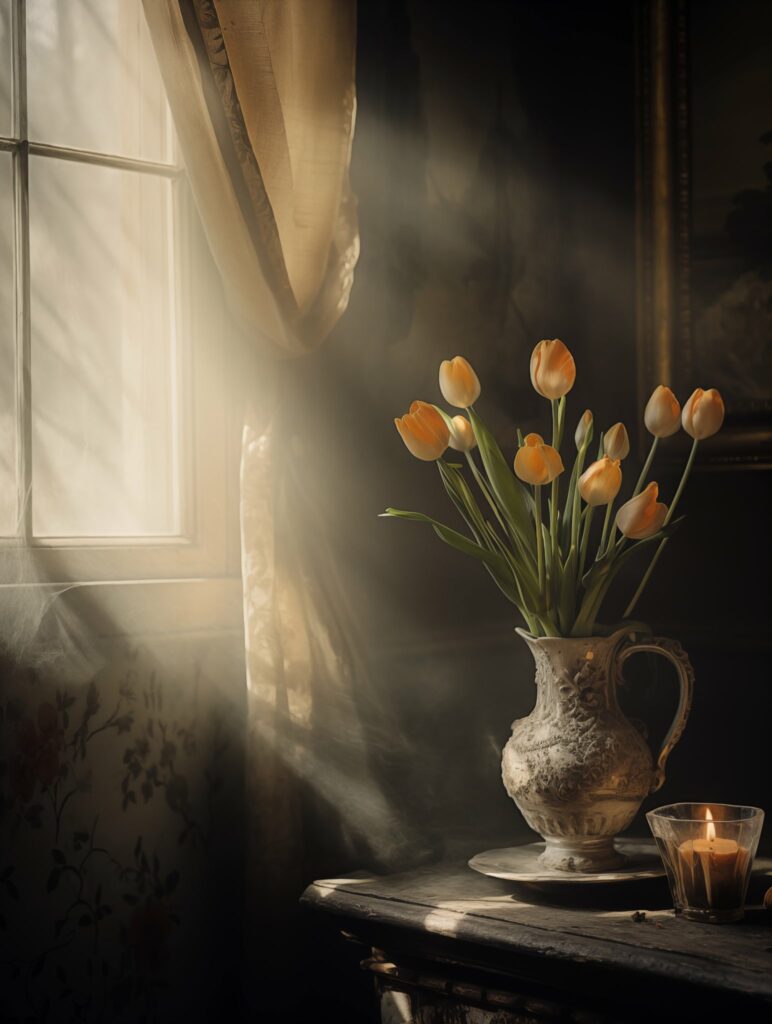On December 15, 2023, Dutch Homage World was launched—a unique NFT collection with two themes: Dutch Old Masters and the vibrant Dutch colors red, white, blue, and orange. Several artists from the Dutch Art Community took on the challenge, creating pieces inspired by these themes. Last month I made my first blog about the works in Dutch Homage World on Foundation, inspired by Old Masters. In this second blog, I want to dive deeper into the historical and cultural significance of the colors red, white, blue, and orange and how these iconic hues connect with the tulip—an enduring symbol of Dutch heritage.
The Story Behind Red, White, Blue, and Orange
In 1533, Willem van Nassau, known as the “Father of the Netherlands,” was born. He inherited the title Prince of Oranje-Nassau in 1544 when his French cousin passed away, leaving him his possessions and the independent Principality of Oranje. The title also gave him the name Prince of Oranje, with “Oranje” translating to Orange in English.
During the Eighty Years’ War, Prince Willem of Oranje-Nassau became a central figure in the Dutch fight for independence from Spanish rule. His leadership not only inspired the Dutch resistance but also shaped their national identity. The colors blue and white, prominent on his uniforms, were combined with orange—representing his princely title—to create the first Dutch flag: orange, white, and blue.
Over time, the orange stripe was replaced by red, likely due to practical reasons. Red dye was more readily available than orange, and sailors found it more visible at sea. Despite the change, orange remained a significant cultural symbol, particularly after Willem’s contributions led to Dutch independence. To this day, the Netherlands celebrates its connection to Willem and the House of Oranje with the vibrant color, most notably during national events like King’s Day and international sports tournaments. In 1937, Queen Wilhelmina officially established the red, white, and blue tricolor as the flag of the Kingdom of the Netherlands through a royal decree, cementing its place in history.
The Tulip: A Dutch Icon
The Netherlands is synonymous with tulips, a flower that has become an integral part of the country’s cultural and economic identity. The tulip (genus Tulipa), originally from the Ottoman Empire, made its way to Europe in the mid-16th century. The Viennese ambassador to Turkey, Ogier Gisleen van Busbeke, first introduced tulip seeds to Austria in 1551. Later, the bulbs arrived in Antwerp in 1562, marking the beginning of tulip cultivation in Europe.
Carolus Clusius, a Flemish botanist, planted the first documented tulips in the Hortus Botanicus in Leiden in 1593. The rarity and beauty of tulips made them a luxury item, leading to the famous Tulip Mania of the 17th century—a speculative frenzy over tulip bulbs. Today, the Netherlands is the world’s largest exporter of tulips and tulip bulbs. Each spring, millions of tulips bloom in the Keukenhof gardens, attracting visitors from all over the world. The vibrant colors of these flowers—often shades of red, white, blue, and orange—pay homage to the Dutch national identity.
Why These Colors and Flowers Matter
The colors red, white, blue, and orange are more than just shades on a flag—they are woven into the fabric of Dutch identity. These colors tell the story of a nation’s struggle for independence, its royal heritage, and its enduring pride. Similarly, tulips, with their rich history and vibrant beauty, are a testament to the Netherlands’ ingenuity and connection to nature.
In Dutch Homage World, these themes come together, blending history, art, and nature into a vivid celebration of what makes the Netherlands unique. As we admire the works inspired by Old Masters, we are reminded of the legacy of Willem van Oranje, the enduring allure of tulips, and the timeless colors that define a nation.
Hues of the Netherlands

This artwork by ArtFromAbove – Cynthia, titled Hues of the Netherlands, is a striking representation of the Dutch identity through its national colors: red, white, and blue. The tulip, a symbol deeply rooted in the Netherlands’ history and culture, is illuminated with vibrant lighting, creating a mesmerizing effect. These colors not only echo the Dutch flag but also serve as a reminder of the country’s rich heritage, from the leadership of Willem van Oranje to the prominence of tulip cultivation.
Red

This breathtaking photo by Nick de Jonge, titled Red, captures the essence of the Netherlands’ natural beauty and cultural heritage. A vibrant field of tulips stretches into the horizon, their deep red hues glowing under the warm embrace of a setting sun. In the distance, an iconic Dutch windmill silhouettes against the orange sky, symbolizing the timeless connection between the Dutch landscape and its history. The image invites viewers to reflect on the Netherlands as a land of vibrant colors, innovation, and tradition. Tulips, which have become a symbol of the country, are celebrated here as a testament to both its artistic and agricultural legacy.
Tulip Mania

This serene and elegant still life by TossiAI, titled Tulip Mania, evokes the spirit of the Dutch Golden Age. It depicts a vase of delicate orange tulips bathed in soft, golden sunlight filtering through a window. The interplay of light and shadow adds a timeless quality to the composition, reminiscent of the works by 17th-century Dutch masters. The tulips, a symbol of wealth and beauty during the historical “Tulip Mania,” bring a poetic connection to the Netherlands’ cultural and economic past. The artwork highlights the intricate balance between natural beauty and human artistry, making it a fitting tribute to the historical significance of tulips in Dutch heritage.
Dutch Masters in the Remix, New Girl with the Pearl by Arjen Roos, Girl with a Pearl Earring by Emsar and The Lute Player by Angie Mathot, fit in both the First and this 2nd blog. They pay tribute to the Old Masters and they pay tribute to the colors red, white, blue and orange.
Let’s celebrate this beautiful homage to Dutch heritage through art, colors, and the timeless tulip!
Don’t forget to visit Dutch Homage World. When you collect an NFT from the collection, you will receive a DAC Pass airdropped. In my third blog, I will share more about this DAC Pass.
Kind Regards,
FotoGraaGHanneke

